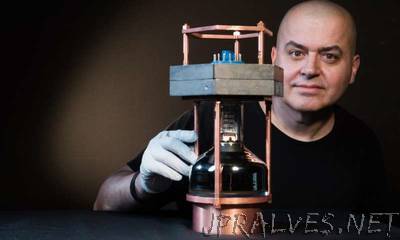
“In 1974, a Fermilab physicist predicted a new way for ghostly particles called neutrinos to interact with matter. More than four decades later, a UChicago-led team of physicists built the world’s smallest neutrino detector to observe the elusive interaction for the first time. Neutrinos are a challenge to study because their interactions with matter are so rare. Particularly elusive has been what’s known as coherent elastic neutrino-nucleus scattering, which occurs when a neutrino bumps off the nucleus of an atom. The international COHERENT Collaboration, which includes physicists at UChicago, detected the scattering process by using a detector that’s small and lightweight enough for a reseacher to carry. Their findings, which confirm the theory of Fermilab’s Daniel Freedman, were reported Aug. 3 in the journal Science. “Why did it take 43 years to observe this interaction?” asked co-author Juan Collar, UChicago professor in physics. “What takes place is very subtle.” Freedman did not see much of a chance for experimental confirmation, writing at the time: “Our suggestion may be an act of hubris, because the inevitable constraints of interaction rate, resolution and background pose grave experimental difficulties.” When a neutrino bumps into the nucleus of an atom, it creates a tiny, barely measurable recoil. Making a detector out of heavy elements such as iodine, cesium or xenon dramatically increases the probability for this new mode of neutrino interaction, compared to other processes. But there’s a trade-off, since the tiny nuclear recoils that result become more difficult to detect as the nucleus grows heavier.”
